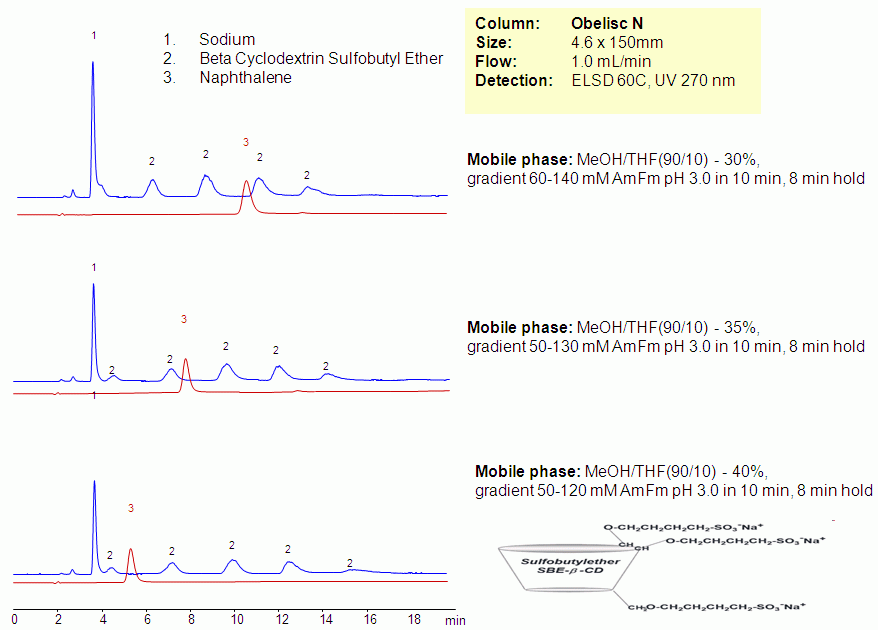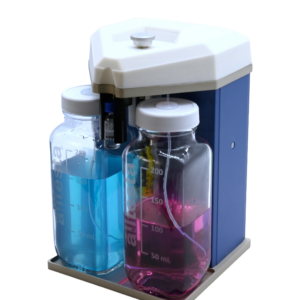
Cyclodextrin sulfobutyl ether is sulfonated derivative of cyclodextrin. The degree of sulfobutylation varies, and the compound is a mixture of several components. All compounds are very polar and acidic in nature, and are not retained by traditional reversed-phase chromatography. Separation was achieved on an Obelisc N column in anion-exchange mode. Hydrophobic naphthalene was used a a reference standard. Cyclodextrin was monitored by ELSD.
| Column | Obelisc N2, 4.6×150 mm, 5 µm, 100A |
| Mobile Phase | MeOH, THF |
| Buffer | AmFm pH 3.0 |
| Flow Rate | 1.0 ml/min |
| Detection | ELSD, 60C UV 270 nm |
| Class of Compounds |
Hydrophobic, Ionizable |
| Analyzing Compounds | Sodium, Beta Cyclodextrin Sulfobutyl Ether, Naphthalene |
Application Column
Obelisc N
SIELC has developed the Obelisc™ columns, which are mixed-mode and utilize Liquid Separation Cell technology (LiSC™). These cost-effective columns are the first of their kind to be commercially available and can replace multiple HPLC columns, including reversed-phase (RP), AQ-type reversed-phase, polar-embedded group RP columns, normal-phase, cation-exchange, anion-exchange, ion-exclusion, and HILIC (Hydrophilic Interaction Liquid Chromatography) columns. By controlling just three orthogonal method parameters - buffer concentration, buffer pH, and organic modifier concentration - users can adjust the column properties with pinpoint precision to separate complex mixtures.
Select optionsUV Detection





